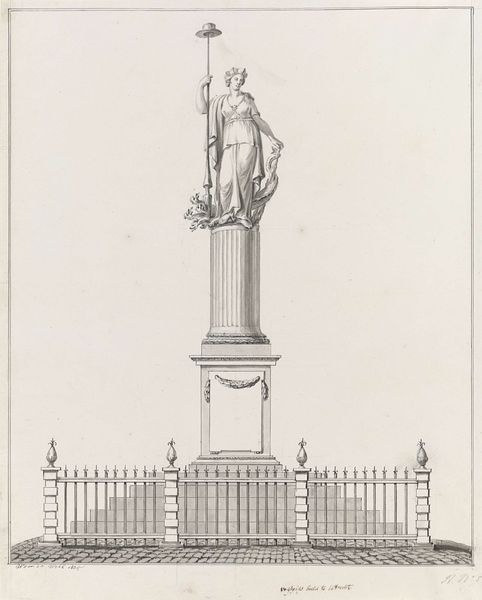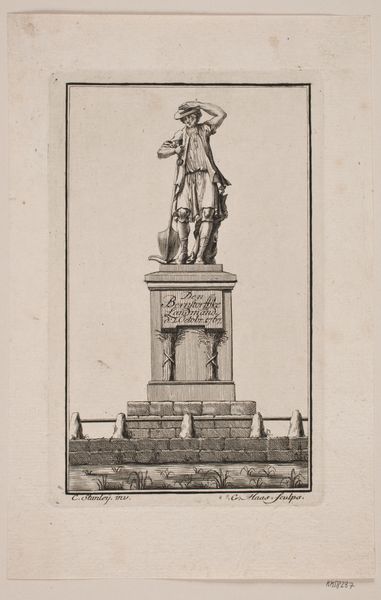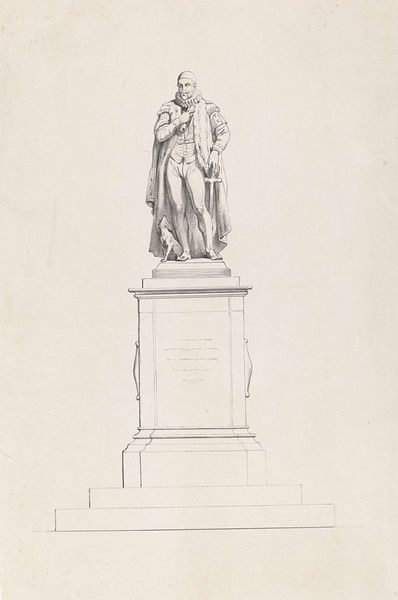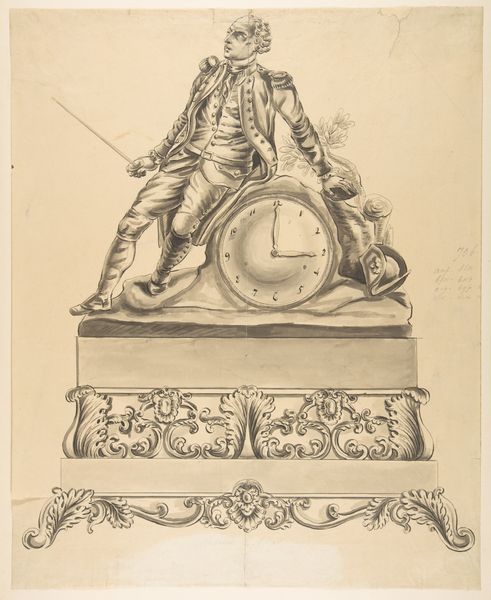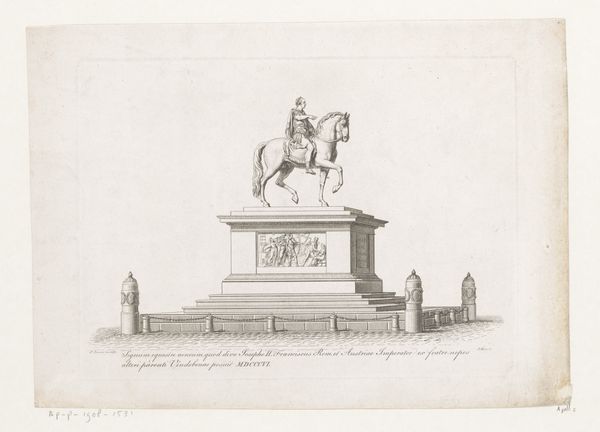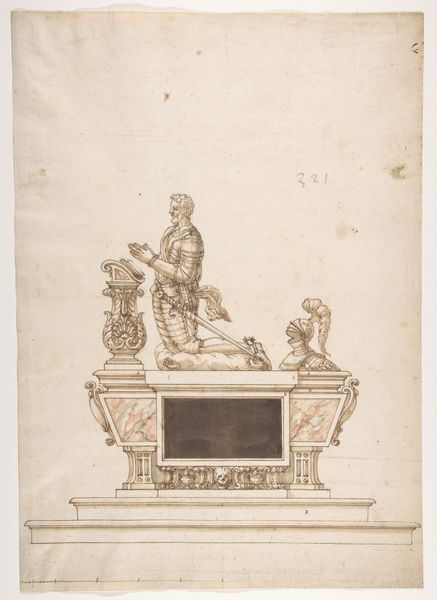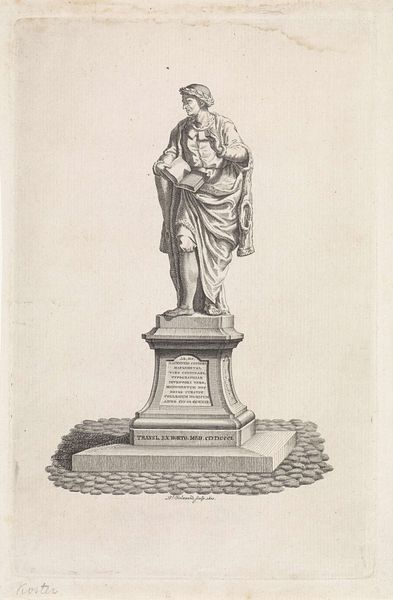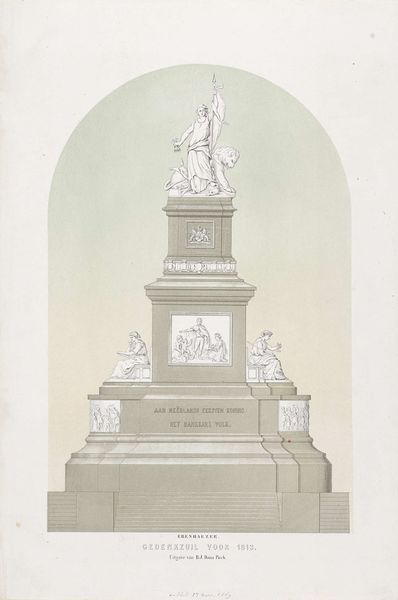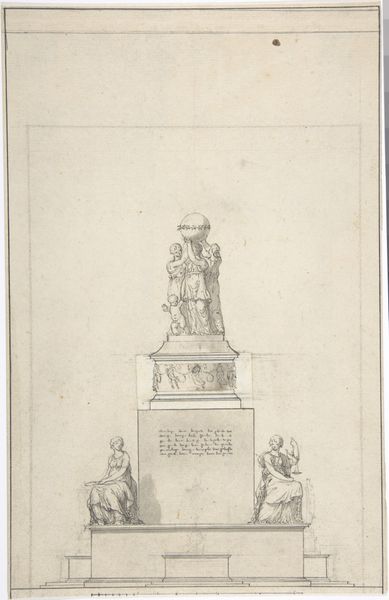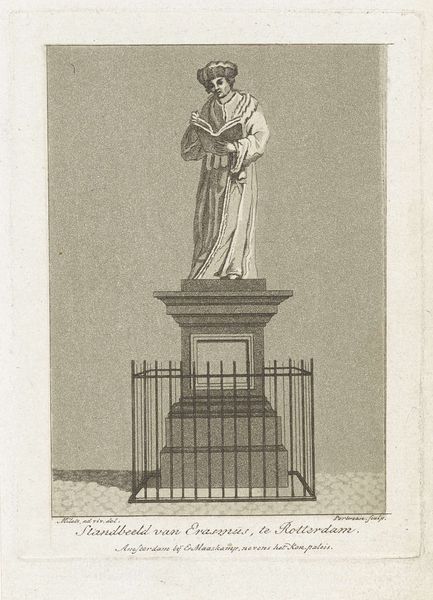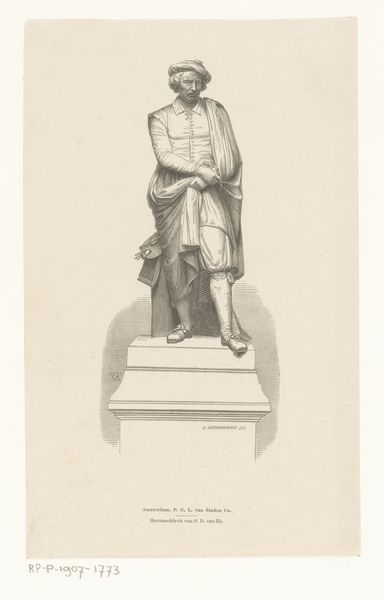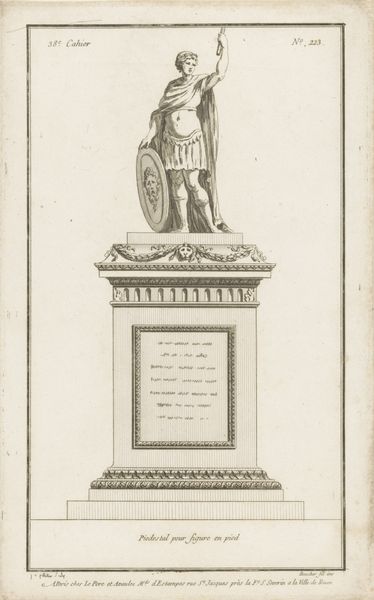
drawing, print, pencil
#
portrait
#
pencil drawn
#
drawing
#
aged paper
#
toned paper
#
light pencil work
#
neoclassicism
# print
#
pencil sketch
#
old engraving style
#
landscape
#
personal sketchbook
#
idea generation sketch
#
pencil
#
sketchbook drawing
#
pencil work
Dimensions: height 260 mm, width 150 mm
Copyright: Rijks Museum: Open Domain
Curator: I'm struck by the delicate linework in this drawing. It depicts the statue of Rembrandt, executed sometime between 1842 and 1887 by Carel Christiaan Antony Last. It resides here in the Rijksmuseum as a print on toned paper. Editor: There’s a beautiful fragility to it, isn't there? A sort of faded glory, even the fence seems… permeable. The statue itself looms quite imposingly on its pedestal; very different in feeling than, say, one of his intimate self-portraits. Curator: That's a fascinating observation. While Rembrandt represents individual genius, his public representation attempts to embody a sort of cultural immortality. The symbols we create around significant figures are inevitably weighty and self-conscious, and reveal society’s shifting relationship with historical figures and its heroes. Editor: Immortality... I find it so intriguing how a single image can compress so much human striving. I mean, look at his pose, thoughtful, observant – almost guarded behind that flimsy metal fence, and lifted up above street level. It almost hints that the monument exists to protect the celebrated subject. Curator: Indeed, those barriers – literal and symbolic – simultaneously enclose and elevate. Statues like these don’t just honor; they prescribe how we should think about a person. By encasing Rembrandt in this idealized, public form, what do we, in turn, conceal or reveal about Dutch identity itself? Editor: Perhaps a nation's hope to immortalize a man’s unique style. What an intense project to create something of an ideal and universal value with a statue. Do you suppose folks walking by paid the image much heed, or did it slowly fade into background? Curator: That's a poignant question. In the shifting tides of fashion and culture, public monuments can become so familiar they dissolve into the urban landscape, until perhaps an artist re-imagines them in a simple sketch, and we see them anew. Editor: Yes! And that fresh look lets the old monument take on an uncanny resemblance to an absent friend... almost a haunting feeling comes to me. A faint memorial sketch brings the old ghost of history up to date in our current space of remembering!
Comments
No comments
Be the first to comment and join the conversation on the ultimate creative platform.
